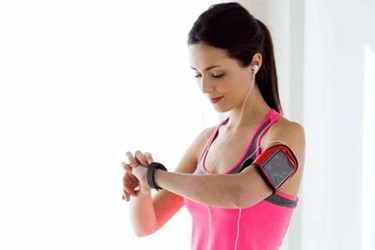Are Wearables Improving Outcomes?

By Bob Marshall, Chief Editor, Med Device Online

To all of you who take health and fitness seriously, I say “hang in there.” It’s almost February and you will have your gyms, swimming pools, and fitness centers back very soon. The January influx of people who made losing weight or getting into shape one of their New Year resolutions will soon recede. Lines will diminish for exercise machines and swimming lanes as the lazy side of human nature lures these well-intentioned newbies back to their comfy couches.
A company I worked for a few years ago generously gifted each employee a Fitbit. They hoped to help all of us become more aware of our physical activity level, and to take steps toward a healthier lifestyle. It worked great for a few months; coworkers compared how many steps they had taken and competed with one another to do more. But interest waned after those first few months. A few true believers continued to use their Fitbit, while others seemed to no longer care if they were a bit fit.
I wonder if this waning of interest and motivation could be at play when reading a news release from the Cedars-Sinai Center for Outcomes Research and Education indicating a lack of evidence that wearable biosensors improve patient outcomes. The study by Cedars-Sinai investigators -- Benjamin Noah, lead author and a clinical research associate at the Center for Outcomes Research and Education; Brennan Spiegel, MD, senior author and director of Health Services Research; and Michelle S. Keller, MPH, co-author and a clinical research specialist at the Center for Outcomes Research and Education -- focused on the growing popularity of wearable biosensors in research studies. The study concluded that there is not enough proof these devices are improving patient outcomes, such as weight or blood pressure.
"As of now, we don’t have enough evidence that they consistently change clinical outcomes in a meaningful way," said Spiegel, "But that doesn’t mean they can’t."
It is no surprise that wearable biosensors are becoming more prominent in the healthcare market, given the tremendous push to manage costs and provide valued-based outcomes. These devices can provide feedback directly to the patient and to healthcare providers. We all can understand the tremendous potential of this data. In a quote attributed to Sir Francis Bacon, “knowledge itself is power.” We recognize the ability to make better decisions about care for a particular patient, and can also see how information could be aggregated for the betterment of treatment across a population.
But as any computer programmer will tell you, garbage in – garbage out. Poor quality input will always produce faulty output. What role might patient motivation -- or lack thereof -- play in making good use of wearable biosensors?
"There is a big difference between using these sensors to track sleep for self-betterment and using them (to) make medical decisions," Keller said. I believe she is right on target. The best opportunity to demonstrate improved patient outcomes with the use of wearable biosensors will be with more serious disease states. In these cases, the patient is highly motivated to be engaged and involved in their diagnosis and treatment, potentially altering their quantity of life remaining for the better.
The Cedars-Sinai study included statistical analyses and literature review comprising 27 studies from 13 countries, published between January 2000 and October 2016. Targets in these 27 studies included management of weight, heart disease, lung disease, chronic pain, stroke, and Parkinson’s disease using wearable biosensors, such as activity trackers, blood pressure monitors, electrocardiograms, weight scales, accelerometers, and pulse oximeters.
The Cedars-Sinai study found that remote patient monitoring with these sensors had no statistically significant impact on any of six clinical outcomes studied: body mass index, weight, waist circumference, body fat percentage, systolic and diastolic blood pressure. The analysis did find, however, that these devices showed early promise in improving outcomes for certain conditions, including obstructive pulmonary disease, Parkinson’s disease, hypertension, and low back pain.
"Many of the studies we reviewed were still in the pilot phase," said Noah. "There just is not enough data yet."
The Cedars-Sinai study also revealed that certain types of interventions worked best, including efforts grounded in social science models, established care guidelines, and those that used personalized coaching. Perhaps this is why many people seeking to improve their physical fitness hire a personal trainer: there is something about guidance by, and accountability to, another person that positively impacts our motivational level.
So the next time you set out to get a bit fit, skip the Fitbit and take a work-out buddy with you. The wearables are great if they work for you, but they don’t work for everybody. Sometimes you need a personal trainer or a work-out buddy that will hold you accountable to the goals you set. When I have to get up early in the morning, I ask my wife to help make sure I do – she doesn’t have a snooze button…
